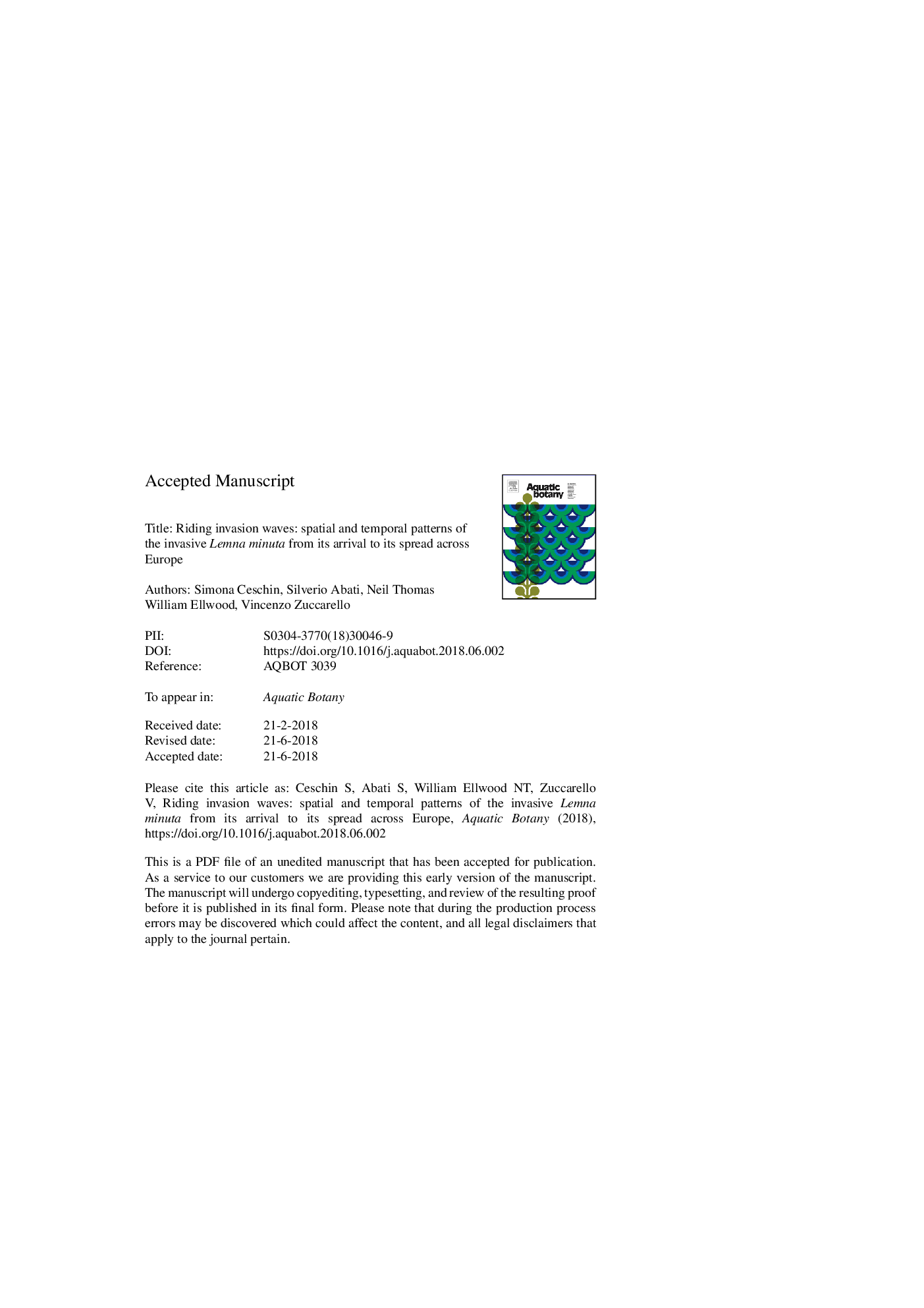| کد مقاله | کد نشریه | سال انتشار | مقاله انگلیسی | نسخه تمام متن |
|---|---|---|---|---|
| 8883539 | 1625792 | 2018 | 21 صفحه PDF | دانلود رایگان |
عنوان انگلیسی مقاله ISI
Riding invasion waves: Spatial and temporal patterns of the invasive Lemna minuta from its arrival to its spread across Europe
ترجمه فارسی عنوان
امواج تهاجمی سواری: الگوهای فضایی و زمانی لومن مهاجم از زمان ورود به آن در سراسر
دانلود مقاله + سفارش ترجمه
دانلود مقاله ISI انگلیسی
رایگان برای ایرانیان
کلمات کلیدی
گیاه آبزی بیگانه، داودیان پراکندگی، خوشه بندی فازی، نقشه تهاجمی، تهاجم تنگی زمانی،
موضوعات مرتبط
علوم زیستی و بیوفناوری
علوم کشاورزی و بیولوژیک
علوم آبزیان
چکیده انگلیسی
In Europe, the duckweed Lemna minuta is an invasive alien that can cause severe abiotic-biotic alterations of lentic aquatic ecosystems. Its invasion history across Europe was spatio-temporally reconstructed from its various introductions to its present distribution by analyzing georeferenced historical records obtained from different sources (bibliography, national-international digital databases). Fuzzy clustering, a form of classification in which an element belongs to different clusters according to a degree of belonging, was used to identify the most important temporal invasion events (pulsations). Geographical representation of these pulsations in invasion maps simplified the detection of the main dynamics of L. minuta movements across Europe. Based on the analyses of the historical data, five main invasion pulsations were identified (1965, 1982, 1991, 2000, 2010). Invasions in Europe began along the Atlantic coasts around the 1950s-1960s. Around the 1980s, L. minuta spread extensively across the United Kingdom and Central Europe. After this, it started to invade Southern and also Eastern Europe, mainly stabilizing around the 2000s. In the last decade, L. minuta consolidated its occurrence in Western and Central Europe, while it continues to colonize new Mediterranean and Eastern European regions. This analysis type is effective in determining spatial-temporal dynamics of invasive alien plants using georeferenced historical data and it also offers insight into the behavior of a biological invader by identifying the main invasion routes and areas most susceptible to future invasion. This latter information can be useful for development of management strategies for preventing invasions and conserving aquatic ecosystems potentially under threat.
ناشر
Database: Elsevier - ScienceDirect (ساینس دایرکت)
Journal: Aquatic Botany - Volume 150, November 2018, Pages 1-8
Journal: Aquatic Botany - Volume 150, November 2018, Pages 1-8
نویسندگان
Simona Ceschin, Silverio Abati, Neil Thomas William Ellwood, Vincenzo Zuccarello,
